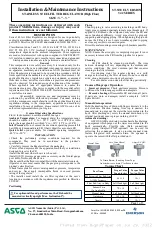
© Koninklijke Philips Electronics N.V. 2005. All rights reserved.
User manual
Rev. 01 — 15 August 2005
147
Philips Semiconductors
UM10139
Volume 1
Chapter 11: I
2
C interfaces
11.8 Details of I
2
C operating modes
The four operating modes are:
•
Master Transmitter
•
Master Receiver
•
Slave Receiver
•
Slave Transmitter
Data transfers in each mode of operation are shown in Figures
.
lists
abbreviations used in these figures when describing the I
2
C operating modes.
In Figures
, circles are used to indicate when the serial interrupt flag is set. The
numbers in the circles show the status code held in the I2STAT register. At these points, a
service routine must be executed to continue or complete the serial transfer. These
service routines are not critical since the serial transfer is suspended until the serial
interrupt flag is cleared by software.
When a serial interrupt routine is entered, the status code in I2STAT is used to branch to
the appropriate service routine. For each status code, the required software action and
details of the following serial transfer are given in tables from
Table 143: Example I
2
C clock rates
I2SCLH
I
2
C Bit Frequency (kHz) at PCLK (MHz)
1
5
10
16
20
40
60
8
125
10
100
25
40
200
400
50
20
100
200
320
400
100
10
50
100
160
200
400
160
6.25
31.25
62.5
100
125
250
375
200
5
25
50
80
100
200
300
400
2.5
12.5
25
40
50
100
150
800
1.25
6.25
12.5
20
25
50
75
Table 144: Abbreviations used to describe an I
2
C operation
Abbreviation
Explanation
S
Start Condition
SLA
7-bit slave address
R
Read bit (high level at SDA)
W
Write bit (low level at SDA)
A
Acknowledge bit (low level at SDA)
A
Not acknowledge bit (high level at SDA)
Data
8-bit data byte
P
Stop condition
















































